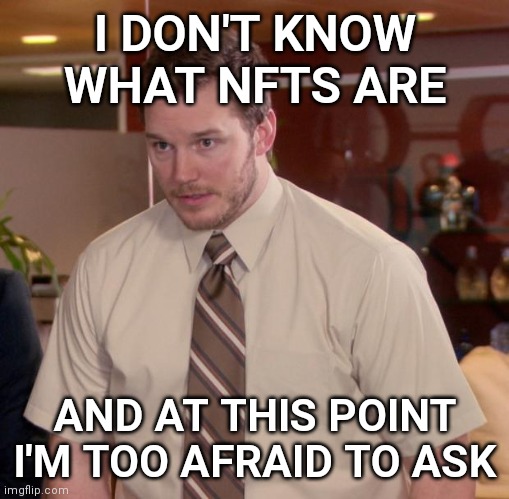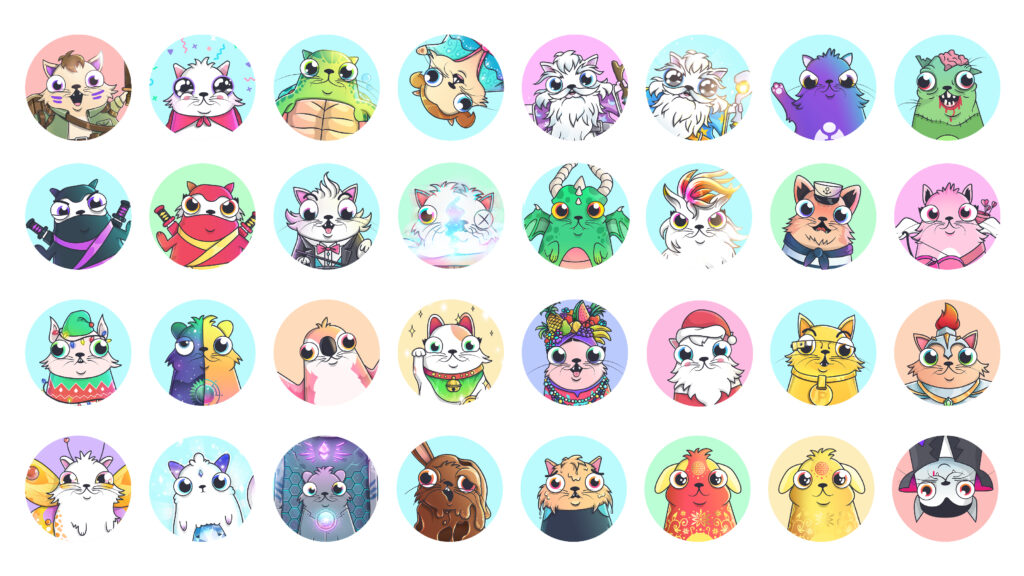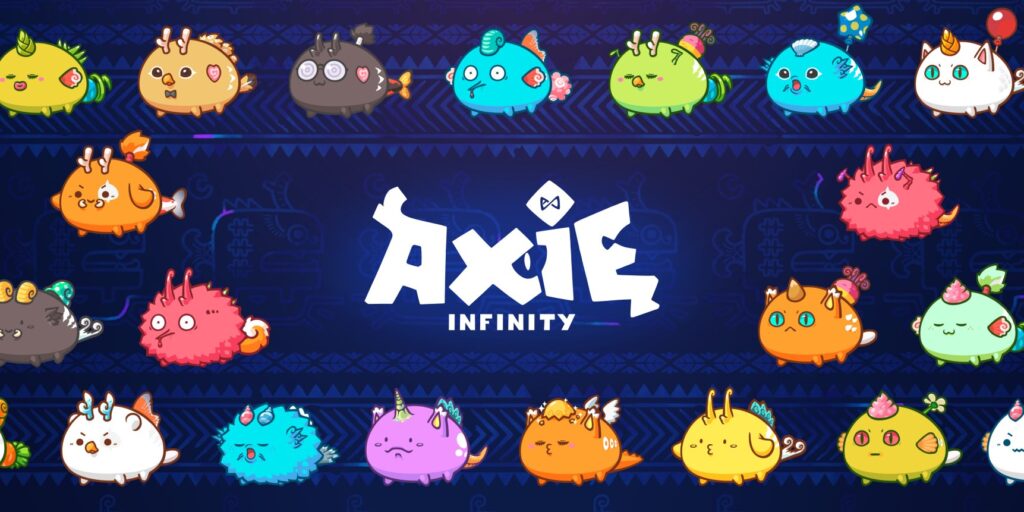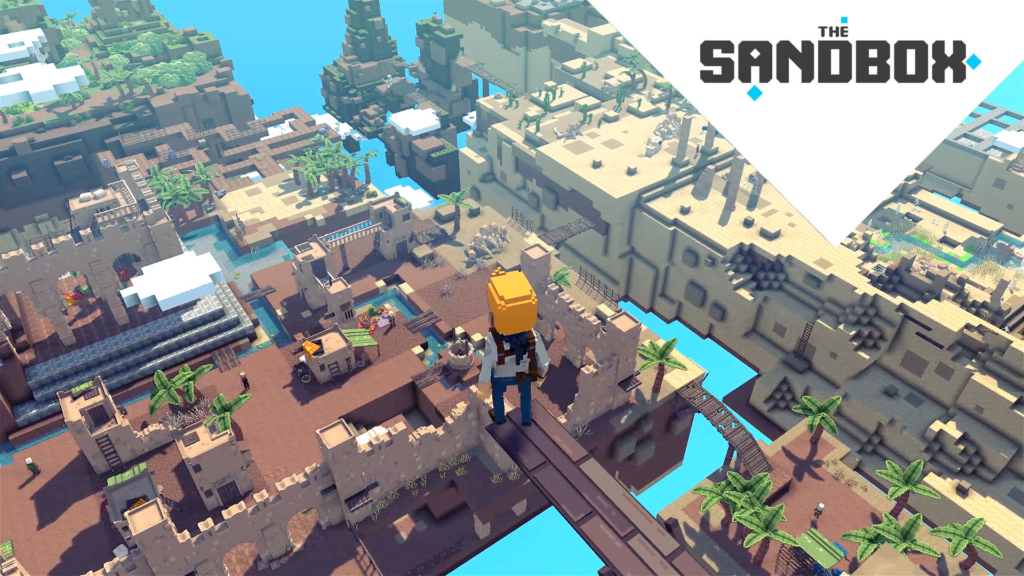NFTs and Their Potential in the Gaming World
NFTs have been taking the internet by storm recently and seem to be popping up in yet another industry everyday. But what even are NFTs? What impact can they have on the gaming industry? If you don’t have time to go through several articles on the topic, check out our overview for a brief introduction to NFTs and what they mean for the video game world.
What are NFTs?

NFT is short for non-fungible token. ‘Non-fungible’ means that each individual NFT is unique and ‘token’ is just another word to say ‘item’ or ‘asset’. So, an NFT is a unique digital ‘item’ that comes with an ownership and authenticity record stored on blockchain technology. The use of ‘token’ in the name can be confusing at first, because it might make you think that NFTs are a type of cryptocurrency, especially since the two are often discussed together. While NFTs and cryptocurrencies exist in the same world, they are by no means the same thing. It’s easiest to think of NFTs as digital items and of cryptocurrencies as the digital currencies we use to buy NFTs.
An NFT can be any manner of digital item, such as graphic assets like memes or original artwork, in-game items like skins, virtual pets, virtual land, and much more. However, NFTs can also serve as a digital record of a physical asset such as real estate or a painting, only retaining the ‘blockchain record of ownership and authenticity’ part of the NFT definition. It’s this use of blockchain technology that makes NFTs so special and much talked about across all industries.
But what is blockchain technology and what’s so great about it?
A blockchain is a type of digital database used to store information. What makes it so noteworthy is the level of security it offers. Firstly, data entered into a blockchain is encrypted. Secondly, blockchains tend to be stored on a decentralized network of computers. This means that there’s no one person or group in control of the database; all users have an equal level of control.
Most importantly, data in a blockchain is more difficult to tamper with because of the structure in which it‘s stored. Information that is entered into a blockchain builds up to form a ‘block of data’. When the block is ‘full’ it becomes permanently sealed and future data will go into a new block attached to the previous one (this is where the chain part comes from). The next block will store some data from the block that came before it making it, even more difficult to alter the data.
By storing data in these sealed blocks, together on a chain, you not only have a secure place to store your data, but the chronological order of data entry can’t be tampered with either, as each block is timestamped. So, what makes blockchain technology so great is that it guarantees the security of a record of data and removes the need for a trusted third party or ‘middleman’ in a transaction. That’s why it’s been used to record cryptocurrency transactions and now, with NFTs, ownership of items.
Despite all its benefits in terms of increased security, blockchain technology also has disadvantages, such as high energy consumption and high costs for each transaction. These issues are planned to be addressed with changes to the technology, such as the release of Ethereum 2.0, the blockchain used in NFT transactions, but even then, there are still other issues. For further reading on the possibilities and issues of the blockchain, we recommend this research paper.
The Rise of NFTs

While the concept of NFTs is said to have started in 2012 with Colored Coins, small denominations of Bitcoin that were used to represent a variety of assets, the first true NFT to be created was Quantum, a digital gif art piece made by Kevin McCoy and Anil Dash in 2014. Then, in 2015, Ethereum launched. It was the first blockchain to incorporate ‘smart contracts’, i.e. packets of code that could keep record of ownership and authenticity. Ethereum made NFTs easier to create, store, and trade, allowing them to set off on their journey to fame.
The first time that NFTs earned a mention in mainstream media was in 2017 with the blockchain-based game, CryptoKitties, in which players would raise, trade, and collect virtual cats (NFTs). The game’s success opened the world’s eyes to the potential of NFTs and was followed by a veritable explosion of NFT innovation. Although a lot was going on behind the scenes, NFTs didn’t pop back up into the mainstream until January 2021, but this time, they went really mainstream. We’re all still talking about them a year later, and it doesn’t seem like the hype will die down anytime soon.
What brought NFTs to the public’s attention this time seems to be a combination of factors. Medium explains that part of it is due to the pandemic-driven increased interest in all manner of crypto-related investments. At the same time, one of the most successful NFT ventures to date, NBA Top Shot, was released at the tail end of 2020 and quickly rose to popularity. When you additionally consider the mind-blowingly large amounts of money that NFT art pieces continue to be sold for ($69 million for Beeple’s The First 5000 Days), it’s no surprise that NFTs still dominate headlines even now.
NFTs haven’t taken the world stage without controversy though. Already, there have been numerous cases of art theft, whereby works are stolen and sold as NFTs. And of course, one can’t neglect to take into account the long-lasting consequences for the climate as a result of the high electricity usage needed to process NFT transactions and mine for the cryptocurrency used to buy them. Moreover, NFTs are said to have contributed to Nvidia’s graphics card shortage; in addition to manufacturing problems caused by the coronavirus pandemic, the cards have been being bought out by cryptocurrency investors to use in their mining rigs.
NFTs and Video Games
The relationship between NFTs and video games started long before 2021. As mentioned earlier, one of the first times NFTs went mainstream was actually because of a game (CryptoKitties in 2017). After the game’s success, it was only a matter of time before NFTs would start spreading in the gaming world. When you add to that the rise of the metaverse in 2021, a concept that is closely tied to both NFTs and gaming, it’s no surprise that 2022 dawned on a horizon ripe with new possibilities for NFTs in video games.
In-game NFT Items
The first thing that usually comes to mind when someone thinks of NFTs in video games is in-game items. After all, the most basic definition of an NFT is ‘digital item’. Incorporating NFTs into games as in-game items is basically just attaching a special receipt to your skin or weapon that grants and tracks ownership. But, what’s the point of this? For the most part, attaching NFTs to in-game items creates the opportunity for resellability and therefore, investment and entrepreneurship. A blackmarket in in-game items has always existed in one form or another around games such as Runescape and World of Warcraft, but with NFTs, the possibility for legitimate blockchain-based trading becomes available.
Another way to see the value in NFT game items is to consider an NFT’s record of ownership. Giving an item an NFT tag makes it unique and tracks its journey through time, distinguishing it from other items of the same type. Imagine for example the increased value of an in-game item that was owned by a popular streamer or was used by the winner of an esports championship. This potential historical value of in-game items would have never existed without NFTs.
In-game NFT items aren’t necessarily the new holy grail though. While some might say that NFTs grant players ‘real ownership’ of an item, if a game were ever to shut down its servers, your NFT would become a bit meaningless. You’d basically have ownership of an item that is no longer usable or accessible. Some have said that due to the decentralized nature of NFTs, in-game NFTs could potentially be used across game worlds, which would solve that problem, but the reality is that the implementation of universal in-game items would require the collaboration of so many different stakeholders that it will probably never become a widespread thing. Another downside to using NFTs in games is the high price tag that usually accompanies them. Due to just the cost of performing a transaction on the blockchain, NFTs are inaccessible to a large part of the gaming community.
NFT-Based Games

The types of NFT-centric games on the market so far can be categorized into Play-to-Collect and Play-to-Earn games. The main aim of Play-to-Collect games is to gather collectibles, which are in themselves, NFTs, e.g. cats in CryptoKitties or a type of video trading card in NBA Top Shot. In Play-to-Earn titles, in-game currency is generally earned through gameplay which can then be used in game or traded in an open market for cryptocurrency. An example would be Axie Infinity, which Newzoo calls “an evolution of CryptoKitties” because the developers added on to the idea of breeding, trading, and collecting virtual pets by offering players the chance to earn currency by using their pets to win battles against other players’ pets. So, in this case, not only are pet NFTs assets that can be bought and sold, but they can generate income as well.
The Metaverse
One does not simply talk about NFTs and gaming without touching on the metaverse. Just like ‘NFT’ and ‘blockchain’, ‘metaverse’ is a word that may need some explanation. A ‘metaverse’ is a network of 3D virtual worlds that use augmented reality, virtual reality, and blockchain technologies in which you exist as an avatar version of yourself. Some people call it the Web 3.0, because in a way, it is similar to the internet in that it’s a decentralized network, and by being an actual world you can enter and ‘walk around in’, it’s definitely an evolution from opening a browser window.
If the metaverse is a digital world, then NFTs are the digital items that will fill it with meaning and gaming is a large part of what we’ll do there. Some would argue that a metaverse already exists–in games! Minecraft is the perfect example of a ‘sort-of metaverse’ that has existed for a long time, but in terms of a full-fledged metaverse, there are some games in development and even one that’s already been released that focus on the concept. Although Meta would like people to think that they are the first, the development of these games started as early as 2015.

The Sandbox and Decentraland are both games that offer a 3D virtual world in which players can buy virtual plots of land (NFTs) which they can then sell, rent, or build their own games upon. The Sandbox has set up a thriving marketplace for, not only land NFTs, but also just about any digital item (NFT) you could want in a virtual world and that has consistently been one of the top sources of NFT transactions globally. Investors are definitely taking the metaverse seriously–gaming companies and even celebrities have been responsible for a large portion of virtual land sales. Only time will reveal what they’ll create in the metaverse and the gaming world that will begin to take shape within it.
With new headlines coming out about NFTs in gaming every day and opinions divided, it’s definitely a hot topic. Here’s a summary of major video game companies in the news and their stands on NFTs:
- Valve announced a ban on blockchain-based games as well as those featuring NFTs in October 2021. In response, an open letter followed, criticizing the company’s decision.
- The Epic Games Store declared the opposite—the platform stated that they welcome NFT games as long as they comply with financial laws and provide an explanation as to how blockchain technologies are being used in them.
- In December 2021, Ubisoft announced a beta test for its new platform for acquiring NFTs, Ubisoft Quartz. In addition, the company implemented NFTs in the PC version of Ghost Recon Breakpoint for cosmetic in-game items.
- GSC Game World joined the NFT trend with plans to auction off the rights to become an NPC in Stalker 2: Heart of Chernobyl. The idea was criticized and subsequently canceled just a few days later.
- Peter Molyneux, known for games like Fable and Godus (and Curiosity – what’s inside the cube), revealed that his new game Legacy, announced back in 2017, will allow players to buy Land NFTs—digital plots of land. The game hasn’t been released yet, but Land NFTs can already be purchased.
- Other gaming companies turning to NFTs when developing their business strategies are SEGA and Square Enix.
In spite of the controversy surrounding them, it doesn’t look like NFTs are going anywhere any time soon. On the contrary, it seems like they’re only just starting to hit their stride now, and we’re sure to see NFTs incorporated into future games and even aspects of real life. Whether they’ll become a permanent and successful feature in gaming remains to be seen. Might as well sit back, play a game, and wait to see where NFTs will take the gaming world.